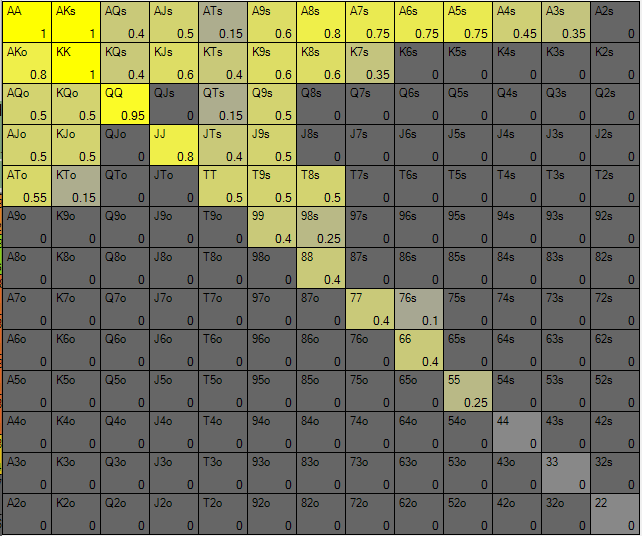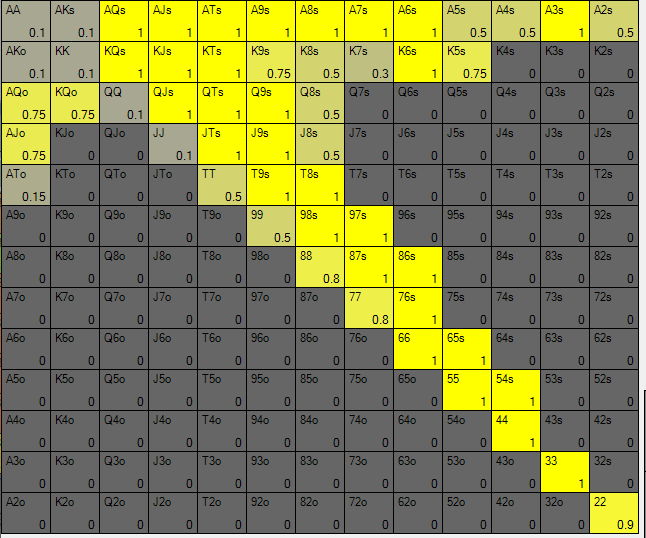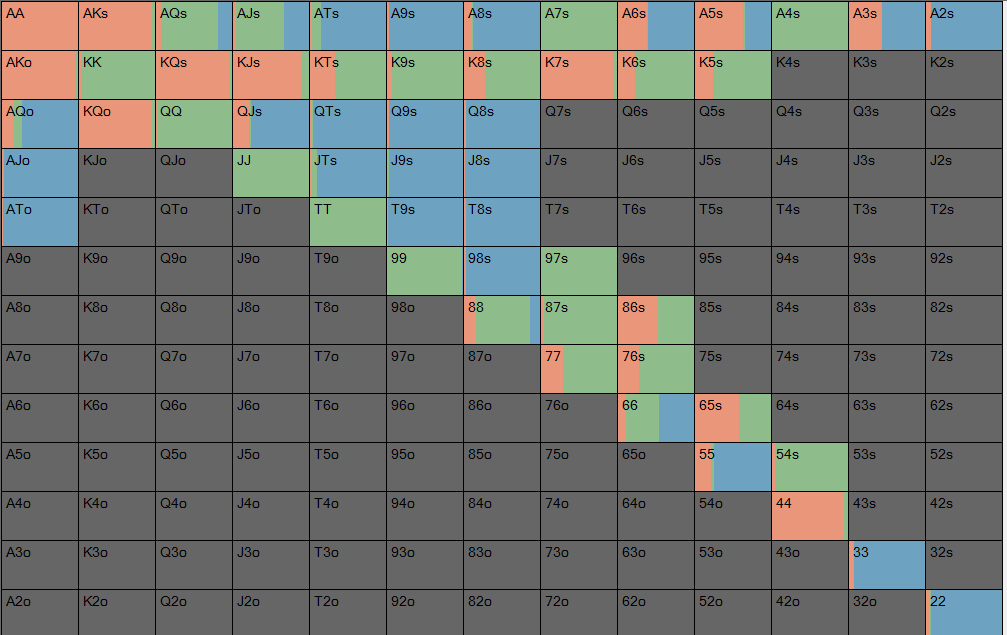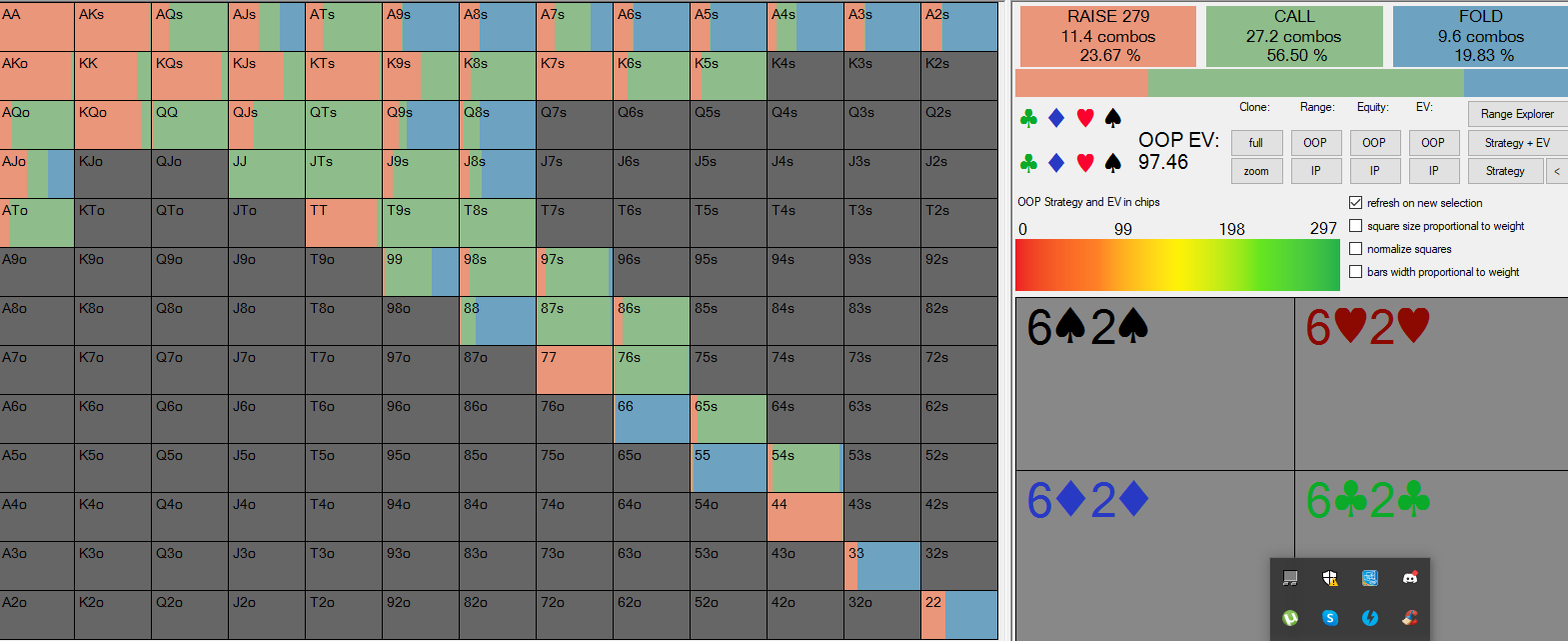One of the more difficult areas for all levels of players is playing 3-bet pots OOP and without initiative, as we already pointed out in previous arti…
Playing 3-Bet Pots OOP
One of the more difficult areas for all levels of players is playing 3-bet pots OOP and without initiative, as we already pointed out in previous article.
This is why today we’ll look into a practical example with help of a PIO Solver.
Why are 3-bet pots OOP so difficult?
If you open a lot (and you want to) and they 3-bet you a lot (and they will more and more how you climb the limits), you 4-bet some, which is easier, but then you have to call those 3-bets otherwise you won’t be able to defend enough of your opening range, thus impliciating that you have to open less and as consequence win less, especially in 2020 poker landscape where you have to be very loose and aggressive to be able to beat any limit above $10.
Logically that will create problems especially for less experienced players who will either play to tight postflop or to loose with that kind of range which has a lot of disadvantages:
- You don’t have the initiative.
- Your range equity distribution is worse than 3-bettors.
- When you come to flop you will face continuation bet much more often in 3-bet than in single raise pots.
So you have to call a lot on the flop also, so you don’t burn even more money by calling pre a lot and then overfolding to cbets (which is very usual mistake). Let’s go more deep to see how should we play postflop in one specific example.
Example
We are in Hijack and open 60 bbs deep, 29.5% of opening range and CO is 3-betting.
CO 3-betting range:

We defend by calling:

Flop Kc 7d 4s
We check oop (only very small percent we could lead, for teh purpose of this example we are going to leave it out)
3-bettor from cutoff now bets. No surprise here, he is cbetting 98% of his range, (other 2 percent or 2.6 combos only is mixed between higher overpairs and some AQs, since it’s only 2.6 combos we can say that eh is cbetting ATC). In theory as in practice in 3-bet pots we are cbetting way more often than in srp, because pot that we are fighting for is larger than in srp.
As we anticipated now we are in potential problem: we know that CO is 3betting solid percent and we also know that he i scbetting always, so what should we defend?
Furthermore this flop favors agressor. We should defend with half of the hands that we called preflop 3-bet, but with 40% of those we can raise which will make our life a bit easier. But be carefull, if we don’t play against optimal opponent, it may be more profitable for majority of our value hands to call, since suboptimal opponent won’t 3-bet on flop for bluff and usually won’t call raises wide enough for us to justify raising on flop with KQ and KJs.
Other parts of the range are pretty standard, meaning that we will only call with KK, mostly call with 77 and always raise with 44, which is kind of obvious, because with KK block villains value get it in range so we just call, and with 44 we don’t block anything so always raise.
We also raise a healthy chunk of oesd’s and gutters and also backdoor gutters and fd’s A3s, A5s, A6s.
Now I would recommend in relative vacuum to raise a bit less and call more of this value hands.
But more important part is our calling range.

So besides inderpairs, top pairs with not great kickers, 2nd and 3rd pairs and draws we also have to call AQs with bdr AJs and some AQo.
We do however fold 22 and 33 and most of 55, which is always better and remember taht for almost any situations.
AQ and AJ can improve much higher percent of times than small underapairs.
Turn
Let’s take a look what happens, if Td come on turn.
We check always, CO continues to bet any two cards! But now we should fold only 20% of our range and defend all the rest!

Now we raise or call all of our gut shots both high and low and we fold rest o the 66 and most of 88;s and 99’s
This is quite the opposite of most of the player pool on all tournaments up to $55 and even higher.
So bear in mind this simple rule: if your hand has robust equity, call it or raise it, if it has hot cold equity fold it! For newer players to understand: again if hand has some potential to improve such as J9s call it, if it’s a pair which only has 2 outs to improve, fold it even though at this point 88 have more equity than those double gutters or 3rd pairs.
Bottom line you can’t fold much, if you want to defend enough preflop.
I see this very often with my students who either call preflop enough and then overfold on flop or turn (folding on turn it’s much more costly than on flop remember that) or adjust by calling less preflop.
Both of these are wrong, you should play loose and wide and when you get in trouble postflop, as you often will, you take time off tables, analyze ranges and opponents and it will get easier.
There are no shortcuts in poker!
To summarize
You have to open at least what PIo is opening (remember it’s playing against optimal opponent meaning that your’s can only be worse so don’t hesitate there).
Then you have to call 3-bets a lot not to get abused.
You have to defend enough on the flop and turn and don’t be afraid to experiment, make mistakes, analyze hands, post them on forums for discussion, etc.
In short come out of your comfort zone, if your goal is to improve in poker!






















